Discover the diverse world of jade plant varieties. Learn about different types of Crassula, their unique characteristics and how to care for these popular succulents in your home or garden.
Jade plants, scientifically known as Crassula ovata, are beloved succulents known for their thick, fleshy leaves and tree-like appearance. While the common jade plant is widely recognized, there are numerous varieties within the Crassula genus, each with its own unique characteristics. In this guide, we’ll explore the diverse world of jade plant varieties and how to care for these fascinating succulents.
Common Jade Plant (Crassula ovata)
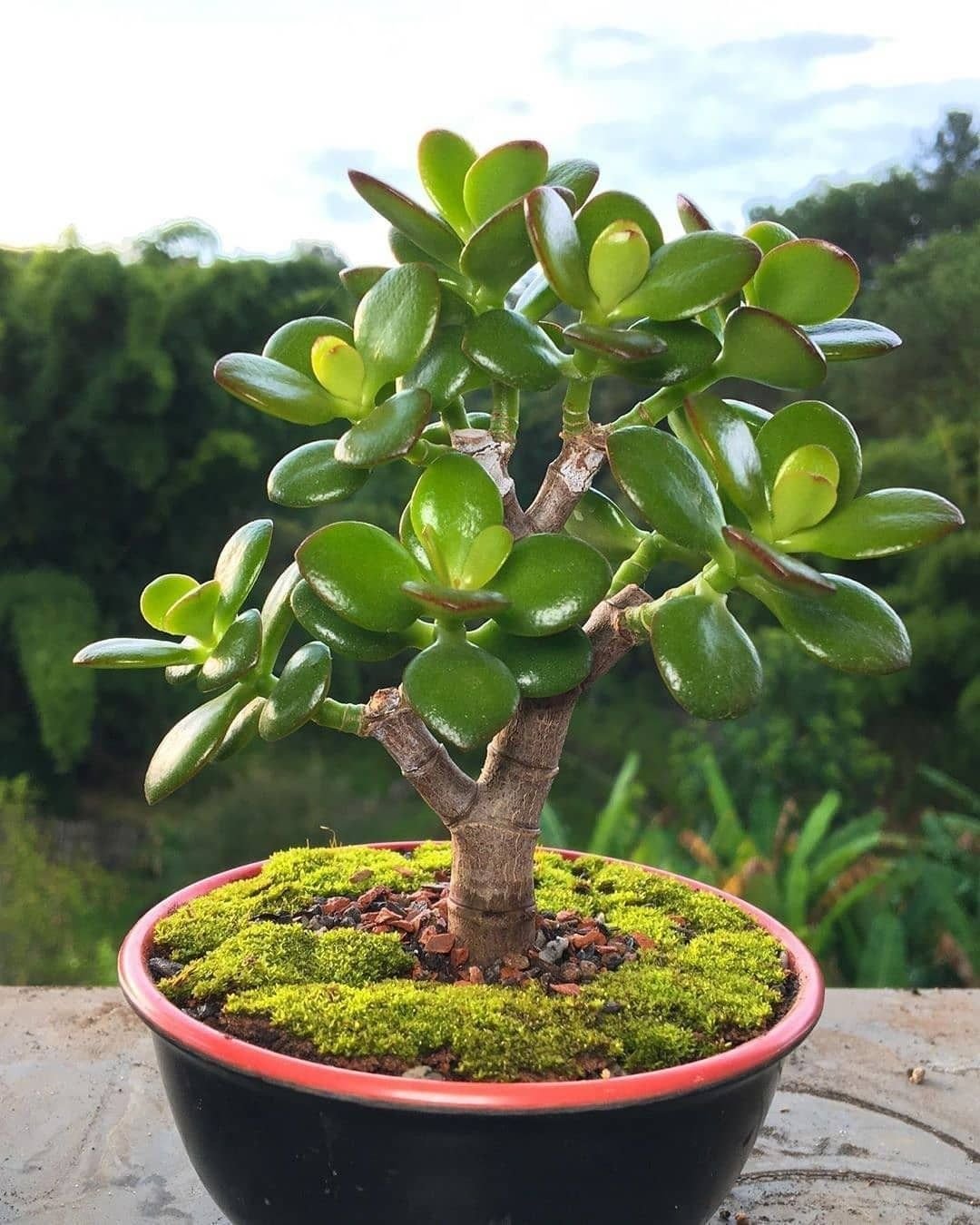
Before diving into the varieties, let’s start with the classic:
- Thick, oval-shaped leaves
- Tree-like growth habit
- Easy to care for
- Also known as money plant or lucky plant
Popular Jade Plant Varieties
1. Hobbit Jade (Crassula ovata ‘Hobbit’)
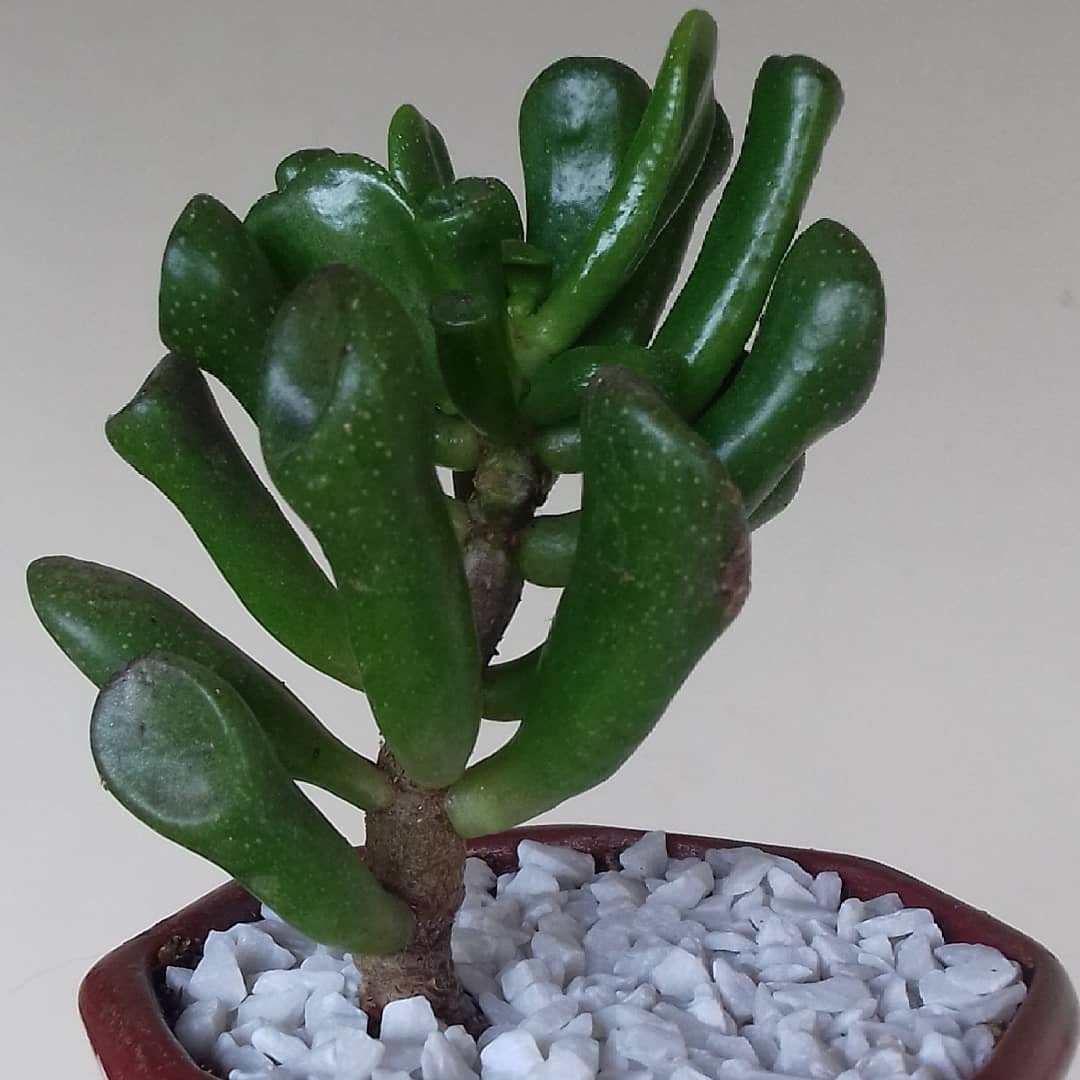
- Tubular, curled leaves
- Compact growth habit
- Red-tinged leaf tips when exposed to sunlight
2. Gollum Jade (Crassula ovata ‘Gollum’)
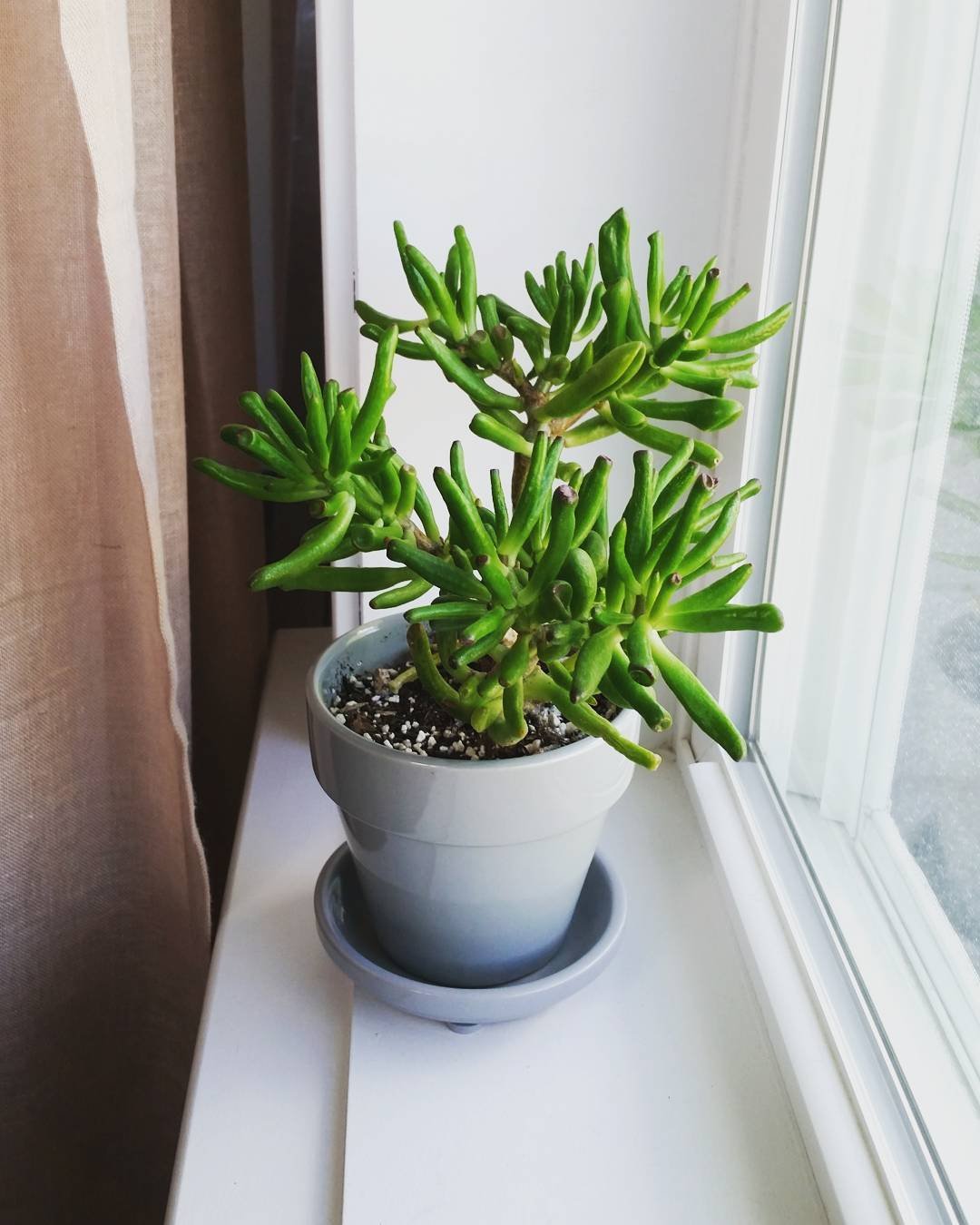
- Trumpet-shaped leaves
- Finger-like appearance
- Red tips similar to ‘Hobbit’
3. Variegated Jade (Crassula ovata ‘Variegata’)
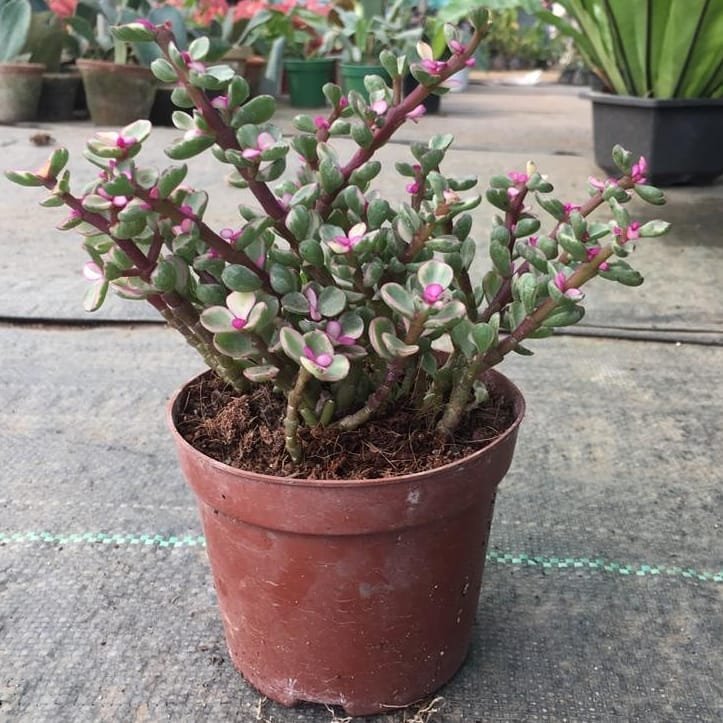
- Green leaves with cream or white edges
- Slower growth than common jade
- Requires more light to maintain variegation
4. Silver Dollar Jade (Crassula arborescens)
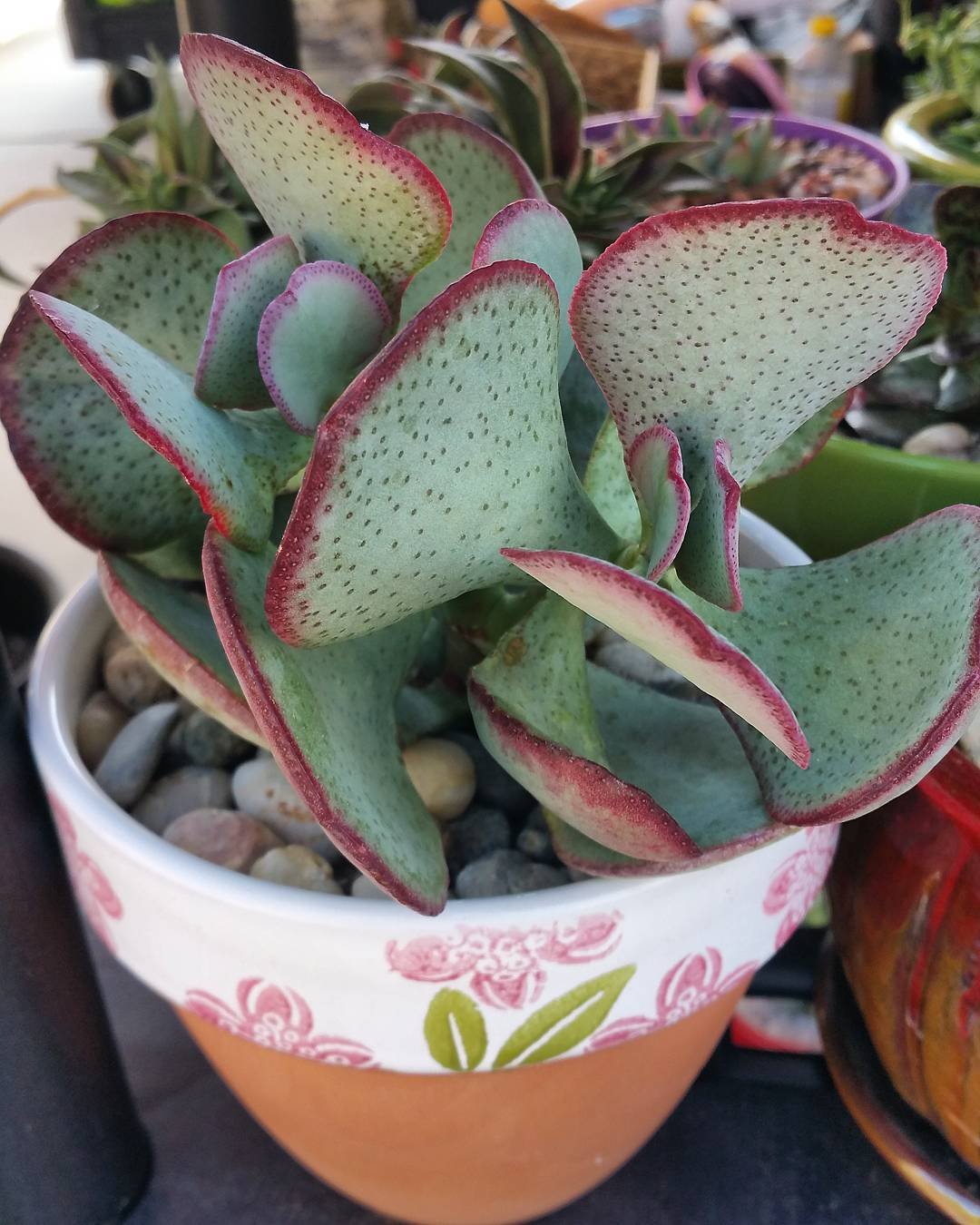
- Round, silver-blue leaves
- Grows larger than common jade
- Also known as blue bird jade
5. Ripple Jade (Crassula arborescens ssp. undulatifolia)
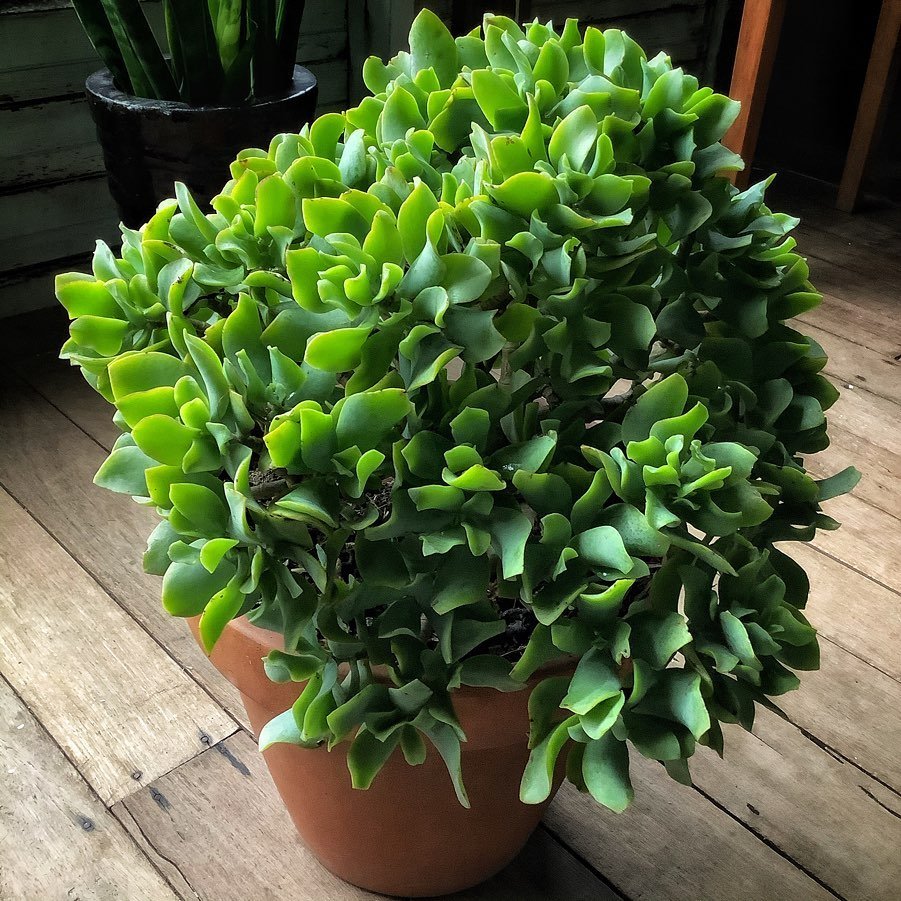
- Wavy, undulating leaf edges
- Blue-green color
- Compact growth habit
Unique and Lesser-Known Varieties
6. Coral Jade (Crassula ovata ‘Hummel’s Sunset’)
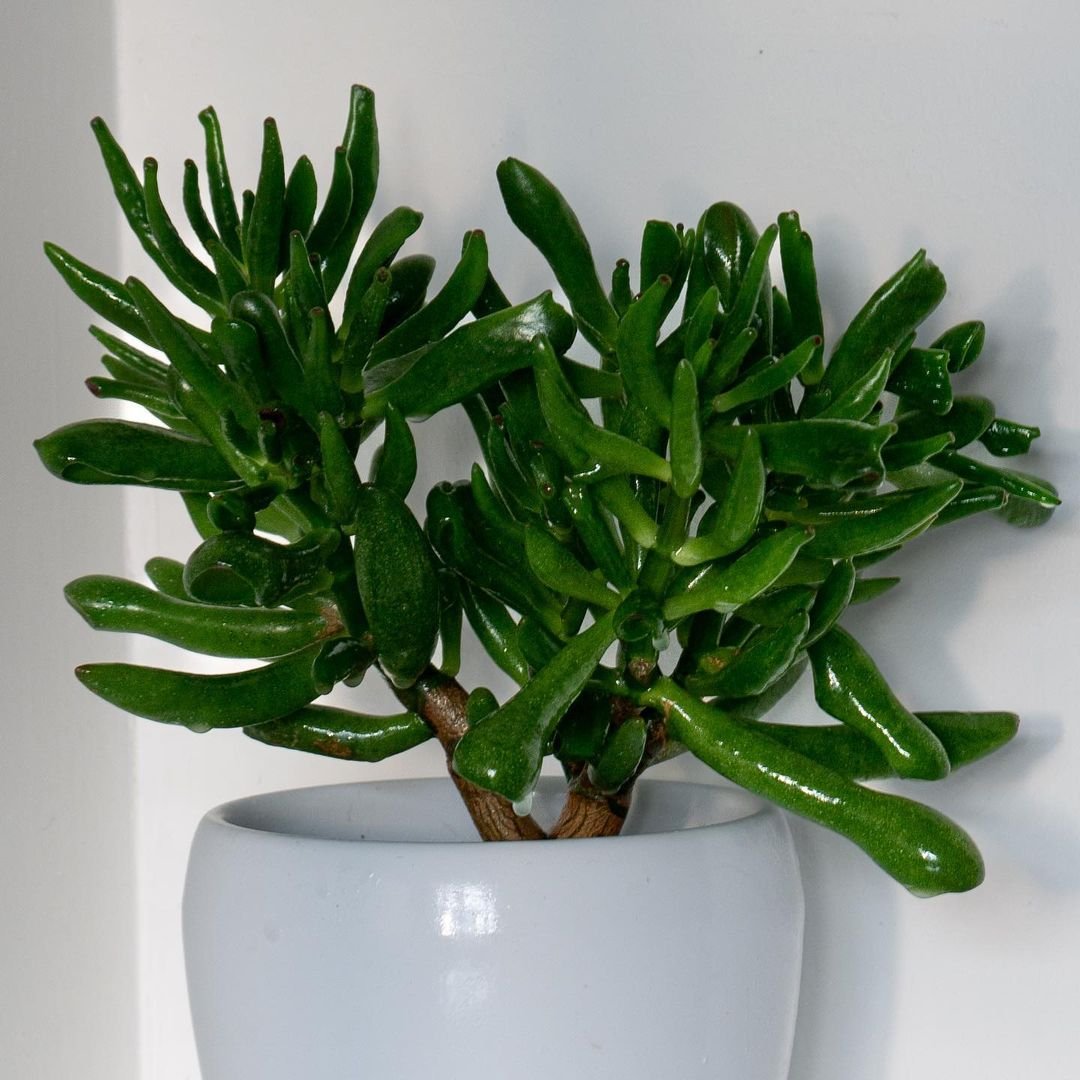
- Green leaves with red, gold, and yellow tones
- Colors intensify with sun exposure
- Also known as Golden Jade
7. Miniature Pine Tree (Crassula tetragona)
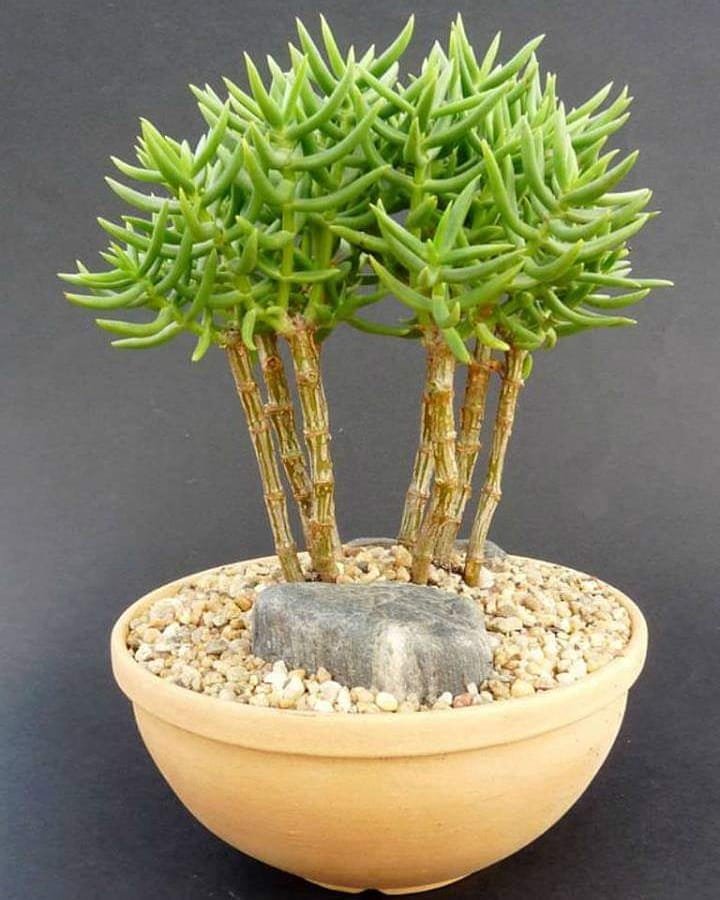
- Narrow, needle-like leaves
- Resembles a miniature pine tree
- Great for creating bonsai-like arrangements
8. Pagoda Village (Crassula capitella ‘Campfire’)
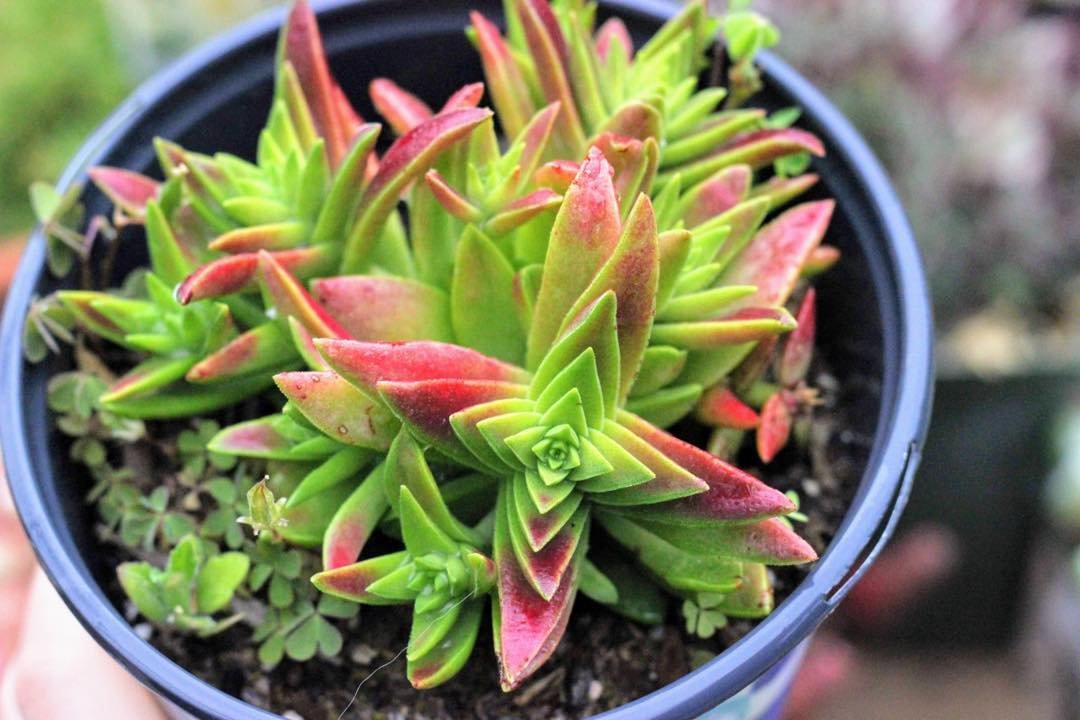
- Stacked, red-tinted leaves
- Forms small rosettes
- Turns bright red in full sun
9. String of Buttons (Crassula perforata)
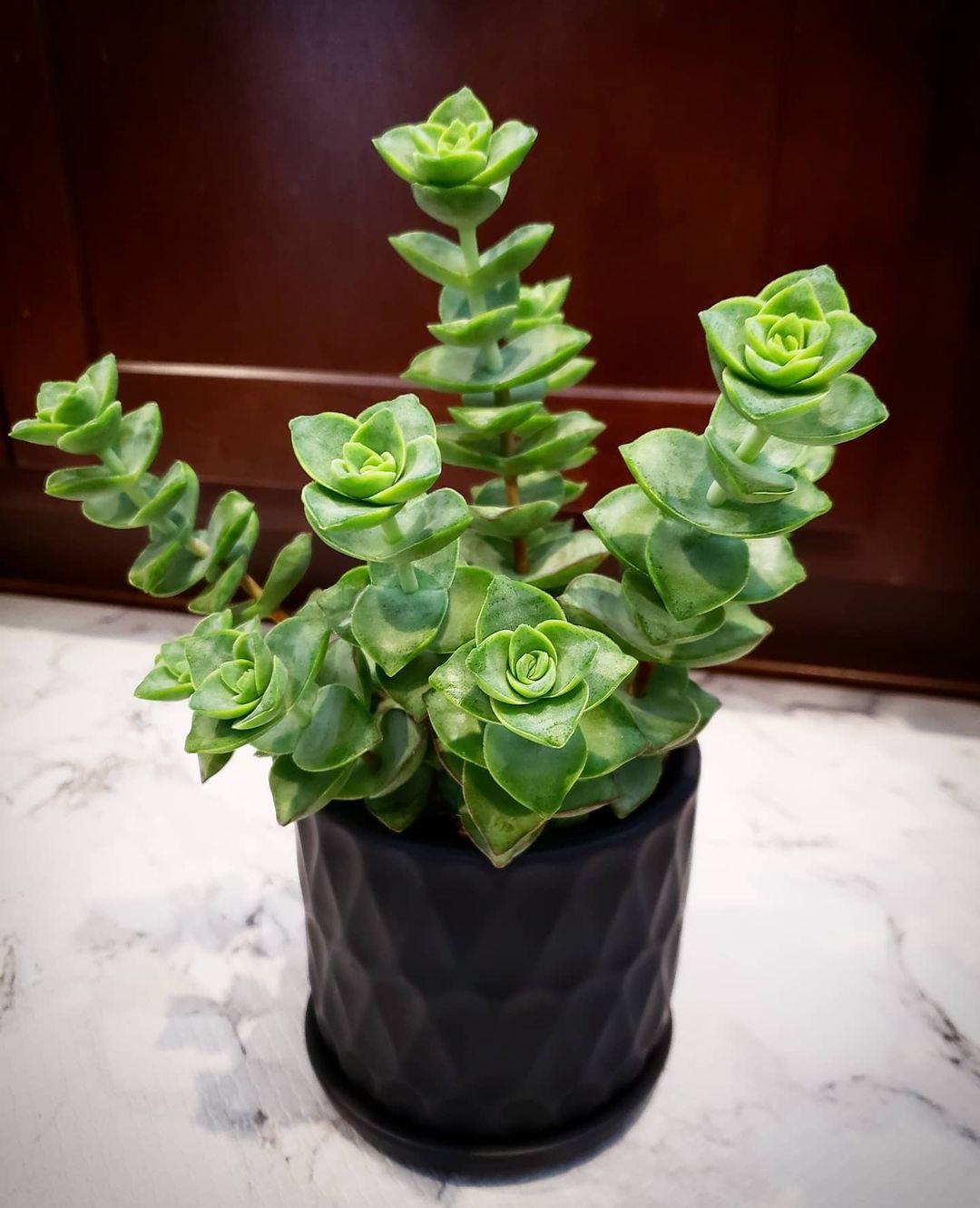
- Small, stacked leaves along thin stems
- Trailing growth habit
- Ideal for hanging baskets
10. Watch Chain (Crassula muscosa)
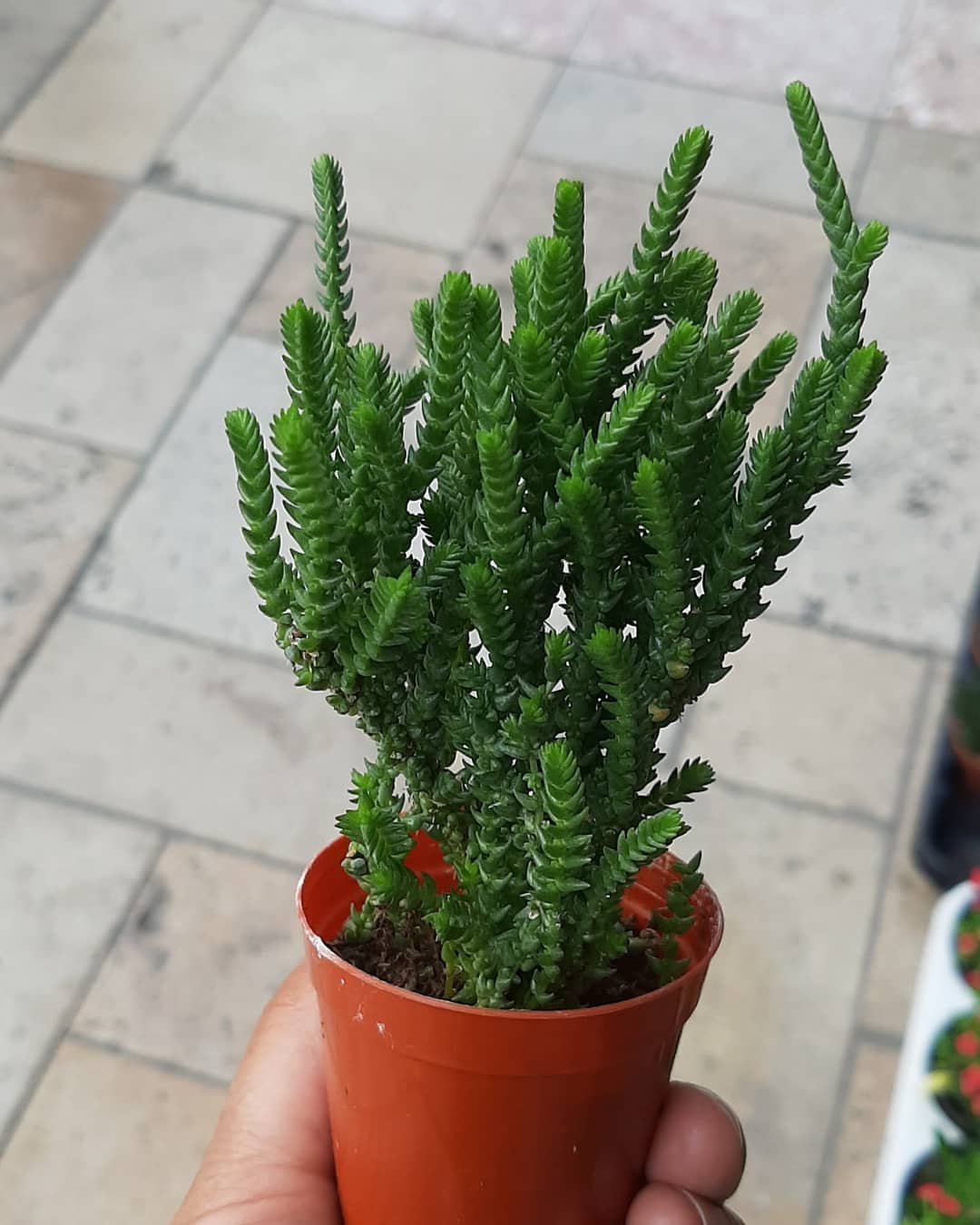
- Tiny, scale-like leaves
- Dense, columnar growth
- Also known as Princess Pine
Caring for Jade Plant Varieties
While care may vary slightly between varieties, most jade plants share similar needs:
Light Requirements
- Bright, indirect light for indoor plants
- Some direct sunlight for outdoor plants, with protection from intense afternoon sun
Watering
- Allow soil to dry between waterings
- Reduce watering in winter
- Avoid overwatering to prevent root rot
Soil and Potting
- Well-draining succulent or cactus mix
- Pots with drainage holes
Temperature and Humidity
- Prefer temperatures between 65-75°F (18-24°C)
- Can tolerate brief periods of cooler temperatures
- Low humidity requirements
Fertilizing
- Feed with a balanced, water-soluble fertilizer during the growing season
- Reduce or eliminate fertilizer in winter
Propagating Jade Plant Varieties
Most jade varieties can be propagated through:
- Leaf cuttings
- Stem cuttings
- Offsets or “pups”
Common Problems and Solutions
Pests
- Mealybugs
- Spider mites
- Scale insects
Solution: Treat with insecticidal soap or neem oil
Diseases
- Root rot (from overwatering)
- Powdery mildew
Solution: Adjust watering habits and improve air circulation
Using Jade Plant Varieties in Decor
Jade plants are versatile and can be used in various ways:
- As standalone potted plants
- In succulent gardens or arrangements
- As bonsai specimens
- In hanging baskets (for trailing varieties)
- As part of feng shui practices for good luck and prosperity
The world of jade plant varieties offers a fascinating array of shapes, colors and growth habits. Whether you’re drawn to the classic look of the common jade or intrigued by the unique forms of specialty varieties, there’s a jade plant to suit every taste and space. With proper care, these resilient succulents can thrive for years, bringing a touch of green beauty to your home or garden.
Remember, while jade plants are generally easy to care for, each variety may have slightly different needs. Pay attention to your plant’s specific requirements and adjust your care routine accordingly. Happy growing!

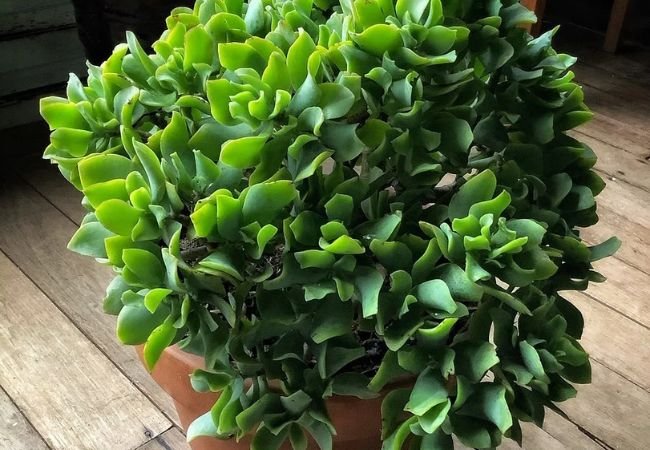





Leave a Reply